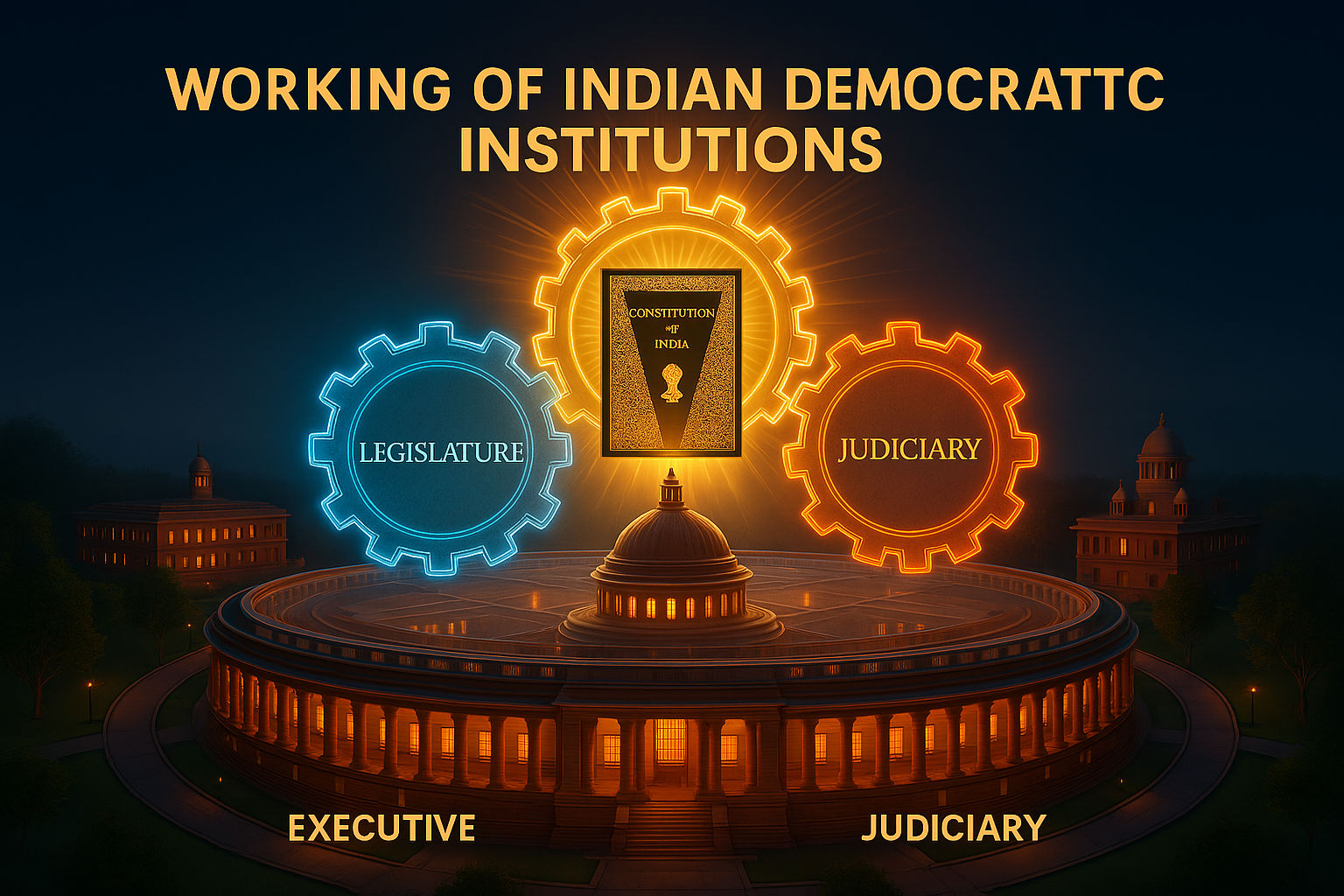Working of Indian Democratic Institutions | Complete Guide

Indian Democratic Institutions
A Comprehensive Guide to Governance Mechanisms
The Constitutional Framework
India's governance structure, established by the 1950 Constitution, creates a sophisticated system of checks and balances:
Legislative Powers
◉ Law-making authority
◉ Budget approval
◉ Executive oversight
◉ Constitutional amendments
Executive Responsibilities
◉ Policy implementation
◉ Daily administration
◉ Defense management
◉ International relations
Judicial Mandate
◉ Constitutional guardian
◉ Dispute resolution
◉ Judicial review
◉ Rights protection
Detailed Legislative Process
1. Bill Introduction
Any member can introduce bills in either House (except Money Bills)
2. Committee Review
Detailed examination by Departmental Standing Committees (24 existing)
3. Debate & Voting
Three readings in each House with recorded voting
4. Presidential Assent
Final approval under Article 111 of Constitution
Did You Know?
The Rajya Sabha has special powers under Article 249 to create All-India Services
Executive Structure Analysis
| Political Executive | Permanent Executive |
|---|---|
| Elected representatives | Appointed civil servants |
| 5-year tenure | Till retirement (35-40 years) |
| Policy formulation | Policy implementation |
Key Executive Bodies
- Prime Minister's Office (PMO)
- Cabinet Secretariat
- NITI Aayog
- Election Commission
- UPSC
Judicial Landmarks
Kesavananda Bharati Case (1973)
Established 'Basic Structure' doctrine limiting Parliament's amendment power
Maneka Gandhi Case (1978)
Expanded Article 21 to include right to live with human dignity
NJAC Judgment (2015)
Struck down National Judicial Appointments Commission Act
Mandal Commission: Deep Dive
Historical Context
The 1980 recommendations emerged from decades of social reform movements. Dr. B.R. Ambedkar's 1932 Poona Pact laid early groundwork for affirmative action.
Implementation Challenges
- 1990: Nationwide protests claiming 27% reservations would reduce merit
- 2006: 93rd Amendment introduced reservations in educational institutions
- 2019: 103rd Amendment extended to economically weaker sections
Current Status (2023)
Total reservation stands at 59.5% in many states:
◉ SC: 15%
◉ ST: 7.5%
◉ OBC: 27%
◉ EWS: 10%
Recent Institutional Reforms
2014: NITI Aayog Establishment
Replaced Planning Commission with think-tank approach
2017: GST Implementation
Largest tax reform requiring coordination between Center-States
2020: New Education Policy
Overhaul of educational regulatory framework
Master Indian Polity with Our Expert Resources
Access 50+ detailed articles, 100+ infographics, and expert analysis
Explore Learning Hub
Join the conversation